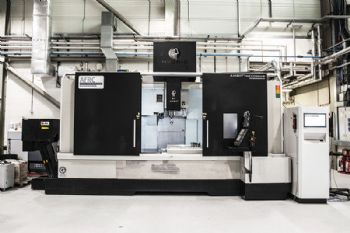
The University of Strathclyde’s Advanced Forming Research Centre (AFRC) (
www.strath.ac.uk) has joined forces with a consortium of six other companies to ‘revolutionise’ the UK’s tool and die sector, paving the way for low-cost remanufacture within the industry.
The two-year project, named DigiTool, is part-funded by Innovate UK and is worth £1.2 million.
Designed to combat the high costs associated with die replacement and repair, it seeks to extend lifespan and improve functional performance.
The project partners, all from ‘the advanced-manufacturing space’, include Toolroom Technology Ltd (TTL), Applied Tech Systems (ATS), Hybrid Manufacturing Technologies (HMT), Insphere Ltd and Kimber Mills International.
They aim to give organisations of all sizes the capability to remanufacture worn or damaged dies by helping them embrace additive manufacturing, adaptive machining and industry 4.0.
Using new technologies and processes to remanufacture worn dies instead of replacing them will help firms to save on costs and materials, while also boosting sustainability.
The consortium is currently exploring additive manufacturing and adaptive solutions for remanufacturing the damaged areas on dies, using a retrofitted legacy machine tool.
Scanning and metrology are used to discover worn areas, before additive manufacturing techniques, such as laser metal deposition, are used to complete the remanufacture back to the desired die form.
Stephen Fitzpatrick, who specialises in machining and additive manufacturing at the AFRC, said: “Investment has been slow across the tool and die sector, which has made it difficult for organisations with limited resources to rethink their manufacturing process.
“Through our additive manufacturing digital framework, we will provide these companies with access to new research, technology and insight at a low cost.”